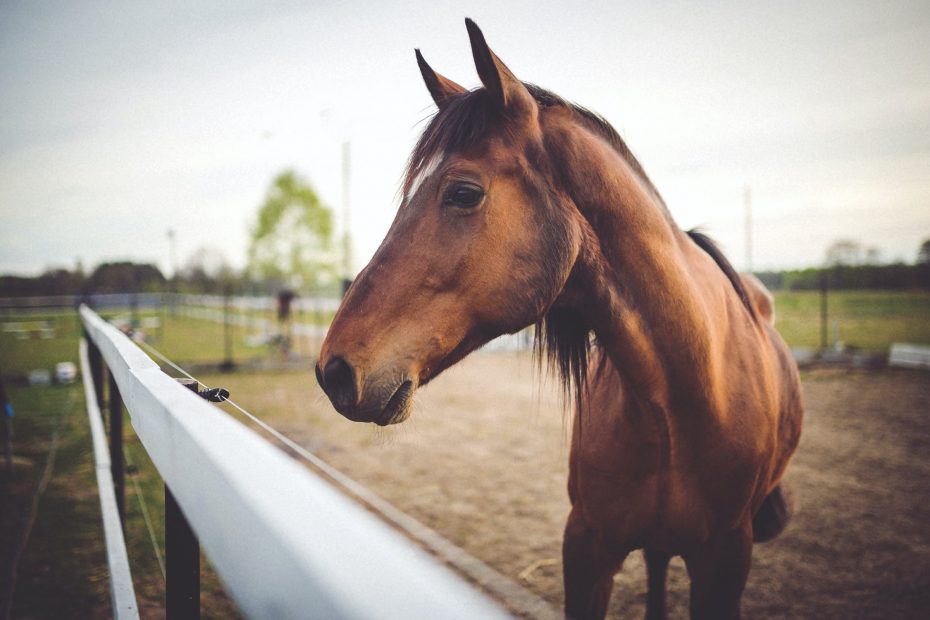Due to implementation of the project “Development and implementation of an innovative method for preparing and conducting stationary performance value assessment of Wielkopolski and Małopolski stallions”, the National Research Institute of Animal Production – the leader of the operational group “Native Horses – an innovative method for training and performance value assessment” and the project partner, the Polish Horse Breeders Association – have provided information on stage one activities of this project.
Information on the project
12 October 2021 witnessed the completion of a two-day performance test of Małopolski and Wielkopolski stallions from the first recruitment as part of the “Native Horses” project implemented by the Consortium (National Research Institute of Animal Production in Balice, Wielkopolska Agricultural Advisory Centre in Poznań, Izby Stud, Private Animal Clinic, and Polish Horse Breeders Association).
The main goal of the project is to increase the number of breeding stallions of both threatened breeds as part of the Genetic Resources Conservation Programmes, which are coordinated by the National Research Institute of Animal Production in Balice.
In the first recruitment, 16 horses (8 Małopolski stallions and 8 Wielkopolski stallions) were accepted into training. Of these, 10 stallions, following training at the Izby Stud, passed the carriage test carried out at the premises of the Klikowska Ostoja Polskich Koni Foundation in Tarnów at Klikowska Street, obtained the required score for conformation, were accepted for breeding and granted a stallion’s licence.
In terms of offspring quality, the most important issue for breeders is selection of mares and stallions for reproduction. In addition to thorough pedigree analysis, performance test results and broadly defined mare and stallion performance, health is an important criterion when selecting the parental generation. Both mares and stallions are selected during rearing, and rearing in groups shapes the hierarchy.
One of the objectives pursued during the first recruitment of stallions was to observe group behaviour of males, their interactions and relationship building – hierarchy and selection for adaptability to near natural rearing conditions. The horses were kept in the group for the maximum length of time outside the stable building on a large pasture with trees and shrubs, which allowed for free movement and herd interactions. This had a beneficial effect on their mental well-being as the stallions were calm and approached humans trustingly. Observations were made of how they coped with the atmospheric and geographical conditions of this demanding site. The horses were fed according to the generally accepted horse feeding standards (Horse Feeding Standards, Polish Academy of Sciences Institute of Animal Physiology and Nutrition, Warsaw 1994) with allowance made for training needs. Apart from behavioral observations, thorough analysis was made of metabolic parameters, notably cortisol, melatonin and other concentrations. The available sources indicate that normalization of these parameters led to improvement in hoof horn quality and prevented growth acceleration. The observations of this group of stallions during training were made in this direction.
The National Research Institute of Animal Production, in coordinating the Horse Genetic Resources Conservation Programmes, pays particular attention to preserving body conformation traits, including withers height, chest circumference and cannon circumference of different horse breeds. Another important criterion is to preserve biodiversity within particular breeds (appropriate number of mares and stallions).
The “Native Horses” project is implemented mainly to select healthy horses that are able to cope in natural conditions, without much human interference, such that the breed characteristics (physical and mental traits) are passed to the offspring.
The many-month observation of stallions has provided valuable information about their extensive adaptability, even under intense physical exertion. This is all the more important because we are making increasing demands on the horses and the current selection is inadequate, as evidenced by the increasing number of young and still unused horses with complications in the joints (bone chips), in the skeletal system, in the respiratory system (RAO), etc.
The observations made on the first group of stallions show that for a full interpretation of the obtained results, it is necessary to continue the observations in the coming years as the greater number of observation will ensure that the results are reliable.
